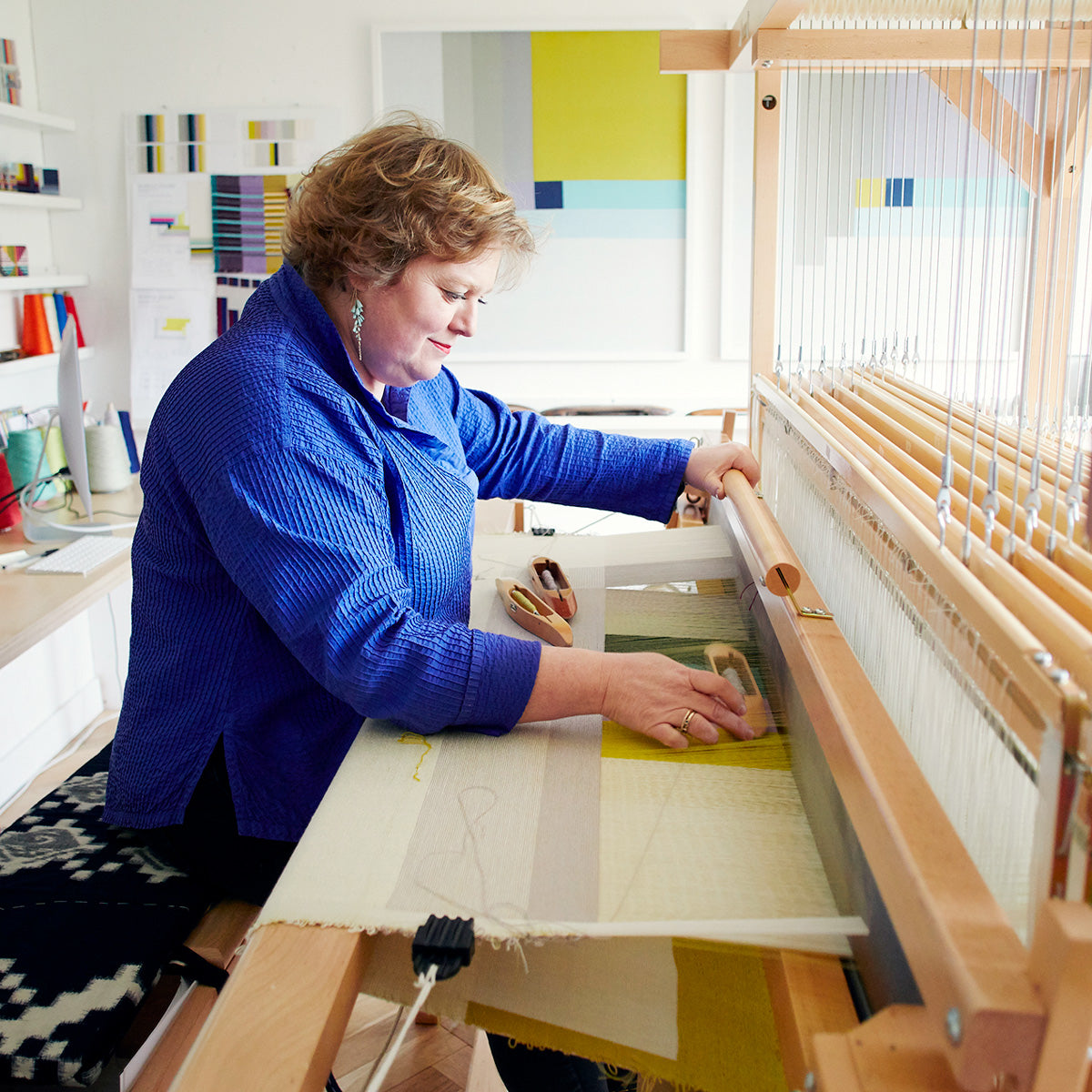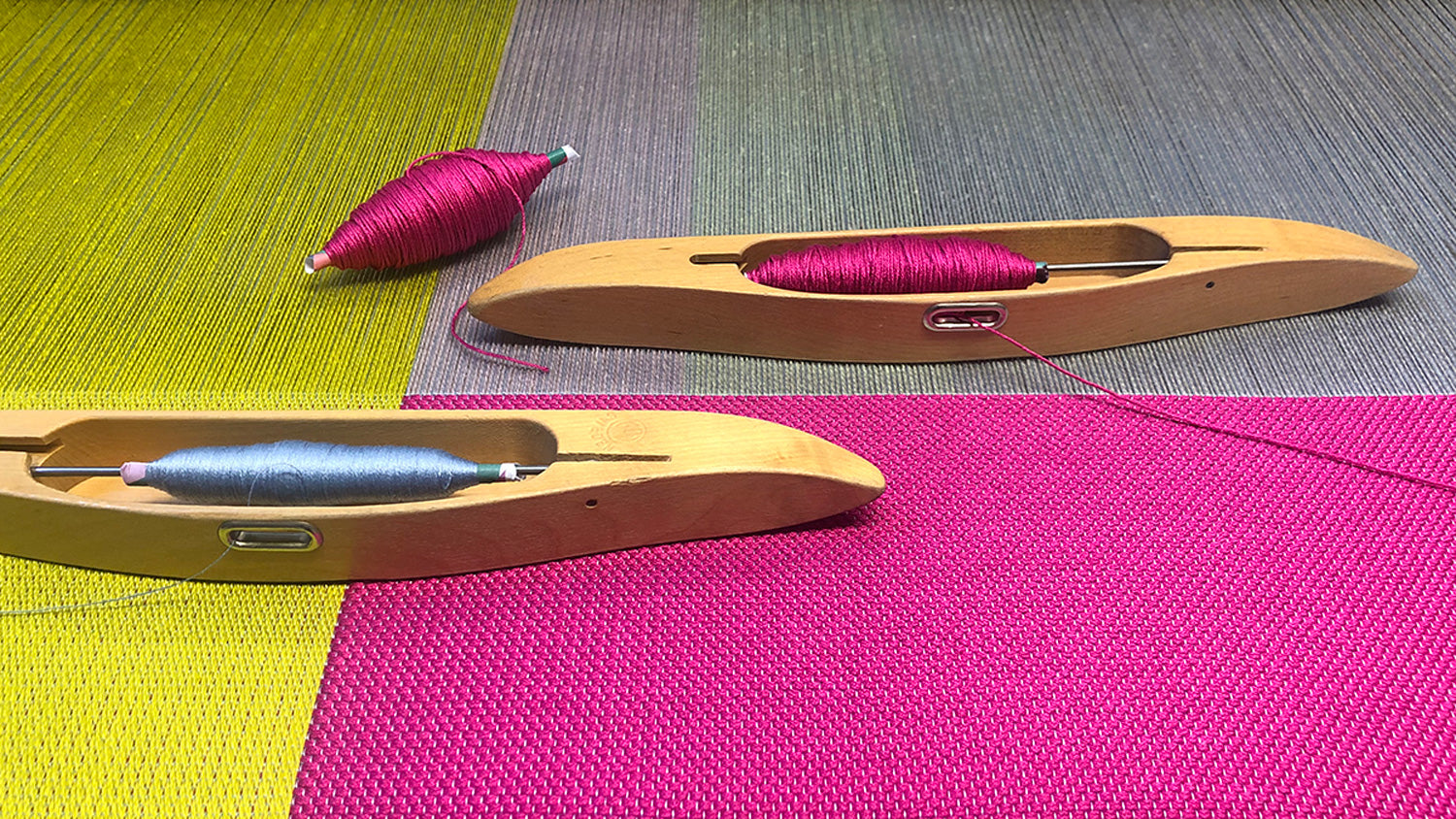Process
Weaving is a methodical practice – rhythmic and meditative, repeatedly sending a shuttle through a warp. Each thread is placed, pushed, positioned – cumulatively constructing the fabric. Many many hours, and days, goes into a build. Margo enjoys the enforced slowness, and the concentration on detail. There is an element of compulsion to this work.
Margo uses many types of thread: cotton; silk; wool; tencel. The warp design is developed through yarn windings. Her handwoven artworks often employ Lampas weave structure, that allows pure weft colour to sit on pure warp colour. This structure was first developed by French and Belgian Huguenot weavers, transforming the English textile trade of the 17th century. Margo uses these structures with a Modernist design sensibility and contemporary outlook.
There are a wide range of looms in the studio – the largest being a 32 shaft Leclerc Weavebird Dobby. The artworks involve creating composition, through drawings and mathematical calculations, that are then executed following the warping, threading and lifting plans.
The set up of the loom is purely practical and requires discipline; winding the warp both on the warpwinder then onto the loom after spreading the warp through the raddle; threading the ends through both the heddles and and reed and finally tying on. This process, which can take several weeks, has to be followed before weaving can commence.
The colour is arrived at freely, following intuition and response to the weaving in progress. The cloth is wound onto a front beam during the weaving and so it is an exciting moment when this can be revealed – the weaving is complete and the cloth can be released from the loom.





